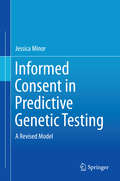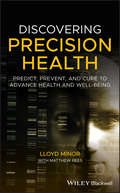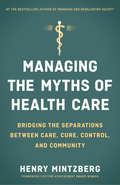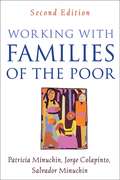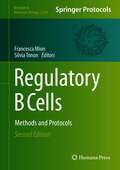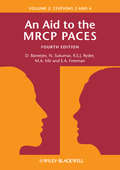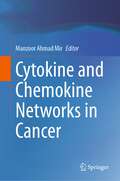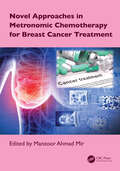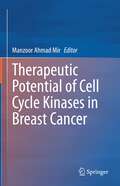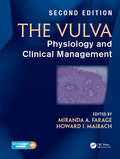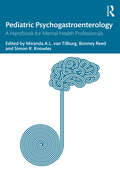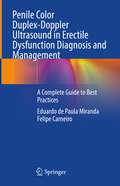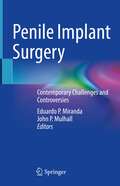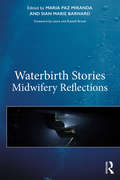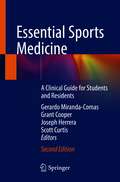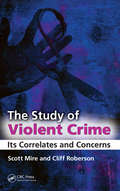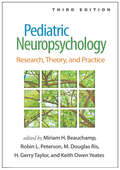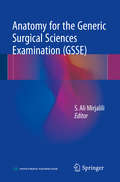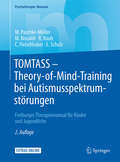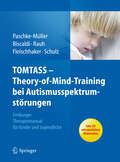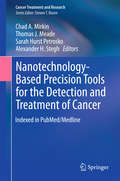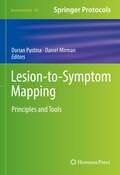- Table View
- List View
Informed Consent in Predictive Genetic Testing
by Jessica MinorThis important book proposes revising the current informed consent protocol for predictive genetic testing to reflect the trend toward patient-centered medicine. Emphasizing the predictive aspect of testing, the author analyzes the state of informed consent procedure in terms of three components: comprehension of risk assessment, disclosure to select appropriate treatment, and voluntariness. The book's revised model revisits these cornerstones, restructuring the consent process to allow for expanded comprehension time, enhanced patient safety, greater patient involvement and autonomy, and reduced chance of coercion by family or others. A comparison of the current and revised versions and case studies showing the new model in real-world applications add extra usefulness to this resource. Included in the coverage: The science behind PGT. Understanding genetic risks and probability. The history of informed consent. Revised model of informed consent: comprehension, disclosure, voluntariness, patient safety. Applications of the model in DTC and pleiotropic genetic testing. Implementation of the revised model, and assessing its effectiveness. A milestone in the bioethics literature, Informed Consent in Predictive Genetic Testing will be of considerable interest to genetic counselors, medical and bioethicists, and public health professionals.
Discovering Precision Health: Predict, Prevent, and Cure to Advance Health and Well-Being
by Lloyd MinorToday we are on the brink of a much-needed transformative moment for health care. The U.S. health care system is designed to be reactive instead of preventive. The result is diagnoses that are too late and outcomes that are far worse than our level of spending should deliver. In recent years, U.S. life expectancy has been declining. Fundamental to realizing better health, and a more effective health care system, is advancing the disruptive thinking that has spawned innovation in Silicon Valley and throughout the world. That's exactly what Stanford Medicine has done by proposing a new vision for health and health care. In Discovering Precision Health, Lloyd Minor and Matthew Rees describe a holistic approach that will set health care on the right track: keep people healthy by preventing disease before it starts and personalize the treatment of individuals precisely, based on their specific profile. With descriptions of the pioneering work undertaken at Stanford Medicine, complemented by fascinating case studies of innovations from entities including the Chan Zuckerberg Biohub, GRAIL, and Impossible Foods, Minor and Rees present a dynamic vision for the future of individual health and health care. You'll see how tools from smartphone technology to genome sequencing to routine blood tests are helping avert illness and promote health. And you'll learn about the promising progress already underway in bringing greater precision to the process of predicting, preventing, and treating a range of conditions, including allergies, mental illness, preterm birth, cancer, stroke, and autism. The book highlights how biomedical advances are dramatically improving our ability to treat and cure complex diseases, while emphasizing the need to devote more attention to social, behavioral, and environmental factors that are often the primary determinants of health. The authors explore thought-provoking topics including: The unlikely role of Google Glass in treating autism How gene editing can advance precision in treating disease What medicine can learn from aviation Discovering Precision Health showcases entirely new ways of thinking about health and health care and can help empower us to lead healthier lives.
Managing the Myths of Health Care: Bridging the Separations between Care, Cure, Control, and Community
by Henry Mintzberg“Health care is not failing but succeeding, expensively, and we don't want to pay for it. So the administrations, public and private alike, intervene to cut costs, and herein lies the failure.”In this sure-to-be-controversial book, leading management thinker Henry Mintzberg turns his attention to reframing the management and organization of health care. The problem is not management per se but a form of remote-control management detached from the operations yet determined to control them. It reorganizes relentlessly, measures like mad, promotes a heroic form of leadership, favors competition where the need is for cooperation, and pretends that the calling of health care should be managed like a business. “Management in health care should be about dedicated and continuous care more than interventionist and episodic cures.”This professional form of organizing is the source of health care's great strength as well as its debilitating weakness. In its administration, as in its operations, it categorizes whatever it can to apply standardized practices whose results can be measured. When the categories fit, this works wonderfully well. The physician diagnoses appendicitis and operates; some administrator ticks the appropriate box and pays. But what happens when the fit fails—when patients fall outside the categories or across several categories or need to be treated as people beneath the categories or when the managers and professionals pass each other like ships in the night?To cope with all this, Mintzberg says that we need to reorganize our heads instead of our institutions. He discusses how we can think differently about systems and strategies, sectors and scale, measurement and management, leadership and organization, competition and collaboration.“Market control of health care is crass, state control is crude, professional control is closed. We need all three—in their place.”The overall message of Mintzberg's masterful analysis is that care, cure, control, and community have to work together, within health-care institutions and across them, to deliver quantity, quality, and equality simultaneously.
Working with Families of the Poor, Second Edition
by Patricia Minuchin Jorge Colapinto Salvador MinuchinNow in a substantially revised second edition, this widely adopted text and practical guidebook presents the fundamentals of family-based intervention with clients struggling with chronic poverty-related crises and life stressors. Grounded in Salvador Minuchin's influential systemic model and the extensive experience of all three highly regarded authors, the book illustrates innovative ways for professionals within substance abuse, foster care, and mental health contexts to build collaboration with families and other helpers, and to elicit families' strengths. The second edition features many new case examples and includes discussions of exemplary programs. It also gives increased attention to key factors that make agencies effective and enable them to maintain a family focus over time.
Regulatory B Cells: Methods and Protocols (Methods in Molecular Biology #2270)
by Francesca Mion Silvia TononThis second edition provides new and updated chapters useful for the study of Regulatory B cells. Organized in four sections, chapters detail basic methods for the isolation and immunophenotypical analysis of these cells, experimental approaches for the ex vivo generation/expansion of IL-10 producing B cells, molecular biology techniques for the analysis of IL-10 expression and production, and animal models mimicking pathologic settings. Written in the highly successful Methods in Molecular Biology series format, chapters include an introduction to their respective topics, lists of the necessary materials and reagents, step-by-step, readily reproducible laboratory protocols, as well as tips on troubleshooting and avoiding known pitfalls.Authoritative and cutting-edge, Regulatory B Cells: Methods and Protocols, Second Edition aims to be useful to the scientific community and serve to clarify some unsolved aspects of Regulatory B Cells research.
p53: The Molecule of Life
by Miquel Àngel Lopezosa CriadoDr. Nicolas Dalmau, a renowned immunologist who is part of the medical research team studying the effect of the p53 molecule as a treatment for cancer, is involved in a devilish web of conspiracy, conspiracy and murder that will turn his monotonous life into a hell that will force him to get the best of himself in order to survive. In his escape, he will drag his girlfriend Vangelis, his friend and colleague Albert and the talented hacker Raquel into a thrilling adventure in which everyone is a suspect and no one is safe from falling under the long tentacles of the criminal organization that is pursuing them. They have only one way out: to unmask the intrigues of a secret society that tries to keep hidden information that can defeat their aspirations in the struggle for world power. Miquel Àngel Lopezosa surprises us with a PSYCHOLOGICAL THRILLER OF SUSPENSE, set in today's BARCELONA, with which he tries to show us the darkest side of a society steeped in depravity, corruption and fanaticism. Secret locations, persecutions and a great mystery to be solved are the ingredients of this exciting novel, full of surprising twists and turns and which will culminate in an UNEXPECTED FINAL. Is the fate of our health really in the best hands?
An Aid to the MRCP PACES
by M. Afzal Mir Robert E. Ryder Dev Banerjee E. Anne Freeman N. SukumarThis new edition of An Aid to the MRCP Paces Volume 2: Stations 2 and 4 has been fully revised and updated, and reflects feedback from PACES candidates as to which cases frequently appear in each station.The cases and scenarios have been written in accordance with the latest examining and marking schemes used for the exam providing an invaluable training and revision aid for all MRCP PACES candidates.
Cytokine and Chemokine Networks in Cancer
by Manzoor Ahmad MirCytokine and Chemokine Networks in Cancer" provides a comprehensive exploration of the roles of cytokines and chemokines in cancer biology. It offers valuable insights into their diagnostic, prognostic, and therapeutic implications, making it a valuable resource for researchers, clinicians, and students interested in the field of cancer immunology and therapy. This book illustrates the importance and significance of the cytokine and chemokine signaling networks in tumor development and progression. It describes the complex networks mediated by cytokine and chemokine receptors promoting tumor cell proliferation, site-directed metastasis, and activation of angiogenic switch in tumor cells. The books also shed light on the heterogeneity of cytokines and chemokine in solid malignancies and their impact on tumor progression and therapeutic outcomes. The chapters provide current information about the types of cytokine-chemokine interactions in promoting cancer stem cell-like characteristics, epithelial to mesenchymal transition, and modulation of the tumor microenvironment. The significance of the complex interactions in cancer biology in the light of therapeutic resistance is also highlighted. The chapters also describe recent advancements in the therapeutic potential of targeting the pro-tumor cytokine and chemokine networks and limiting tumor cell metastasis. Finally, the book also provides a comprehensive yet representative description of a large number of challenges associated with targeting these vital chemokine-cytokine networks. Given its content, the book provides valuable information for researchers in the field of cancer biology and molecular medicine.
Novel Approaches in Metronomic Chemotherapy for Breast Cancer Treatment
by Manzoor Ahmad MirThis book provides the latest research and developments in the field of metronomic chemotherapy for breast cancer. It presents the principles and mechanisms of metronomic chemotherapy, preclinical and clinical studies, and the latest developments in drug delivery systems and nanoformulations. The clinical pharmacology of metronomic chemotherapy, including pharmacokinetics, pharmacogenetics, pharmacoeconomics, and adverse drug reactions, are also examined.Key Features: Introduces metronomics therapy in the neoadjuvant and adjuvant treatment of breast cancer Explores the potential of metronomics in terms of personalized chemotherapy Present pharmacological bases of metronomic chemotherapy Covers the latest developments in drug delivery systems, nanotechnology, and nanoformulations Discusses antiangiogenic effects and the impact of metronomics on immunity This book is useful for students, researchers, oncologists, pharmacologists, and healthcare experts interested in understanding the clinical potential of metronomic chemotherapy in breast cancer.
Therapeutic potential of Cell Cycle Kinases in Breast Cancer
by Manzoor Ahmad MirThis book highlights the interrelation between cell cycle regulators and breast cancer phenotypes. It reviews the roles of Cyclin-Dependent Kinases (CDK) in driving cell cycle progression, cell cycle checkpoints and dysregulation in breast cancer. It also examines the prognostic significance of CDKs in breast cancer. and CDK inhibitors for the treatment of metastatic breast cancer. Further, the book discusses the role of different G1 cyclins in differentiation, chromosome stability, and transcriptional regulation in breast cancer. Additionally, it examines the role of immunogenic effects of CDK inhibitors, the mechanism of resistance and the current clinical trials in breast cancer treatment. Towards the end, the book explores cell cycle regulation as an attractive target for targeted drug therapy in breast cancer. This book is a comprehensive yet concise resource for oncologists and researchers interested in exploring the therapeutic potential of Cyclin-Dependent Kinases in breast cancer.
The Vulva: Physiology and Clinical Management, Second Edition
by Miranda A. Farage and Howard I. MaibachA unique compilation of expertise on anatomy, physiology, clinical issues, and current research, this textbook analyzes the range of presentation with age, ethnicity, symptoms, disorders, diagnoses, and toxicity. The second edition of this essential resource for anyone taking care of female patients has been doubled in scope to include additional chapters. All physicians, whether dermatologists or gynaecologists, as well as those researching the scientific evidence and symptoms, will benefit from the experience of the expert contributors and editors gathered here.
Pediatric Psychogastroenterology: A Handbook for Mental Health Professionals
by Miranda A.L. van Tilburg, Bonney Reed and Simon R. KnowlesBringing together international experts in psychological and behavioural treatments for pediatric gastrointestinal symptoms, this book provides detailed, evidence-based protocols targeting gastrointestinal distress and associated mental health concerns for patients and their families. The first consolidated resource on the topic, Pediatric Psychogastroenterology gives mental health professionals access to the most up to date clinical knowledge and practice. Taking a holistic approach, it guides the reader on the treatment and care of pediatric gastrointestinal patients, as well as how to work with and support children’s parents and families. The book is structured around symptom presentation and common challenges, enabling the reader to focus quickly on the area of need. Each chapter includes clinical pearls of wisdom and 62 developmentally appropriate worksheets for patients and their families to facilitate treatment, available for download. This practical, authoritative guide is an essential resource for mental health professionals who work directly with pediatric cohorts, as well as postgraduate students in health psychology, behavioral medicine, or social work.
Penile Color Duplex-Doppler Ultrasound in Erectile Dysfunction Diagnosis and Management: A Complete Guide to Best Practices
by Eduardo de Miranda Felipe CarneiroPenile Color Duplex-Doppler Ultrasound (PDU) is one of the most important tools available to assess patients with erectile dysfunction (ED), which is a prevalent condition affecting near 50% of men over 50 years of age. Hemodynamic evaluations through PDU have also prognostic value and help choose the best treatment strategy for ED. Although PDU is an objective diagnostic method, the lack of standardized protocols is one of its main limitations and might lead to great variability in performing and interpreting penile hemodynamic studies in both clinical practice and scientific research. These factors have contributed to the fact that PDU is often considered unreliable, as it may lead to mistaken treatment protocols. The aim of the present book is to provide a complete guide to performing an adequate hemodynamic study through PDU with pharmaco-induced erection. It will provide a detailed and illustrative overview of the most common pitfalls for a correct conduction ofthis diagnostic procedure. We will also provide an extensive review of the basic principles in erection physiology and pharmacology, allowing a broader understanding of the implications of PDU in clinical practice. This book will appeal to radiologists and urologists. Its highly informative content will become the ultimate guide not only for fully trained physicians who want to optimize and standardize their procedures, but also for residents and trainees of these specialties. In addition, it will be a useful resource for sexual medicine practitioners, and may reach other specialties and/or healthcare areas such as primary care physicians, gynecologists, psychiatrists and psychologists.
Penile Implant Surgery: Contemporary Challenges and Controversies
by Eduardo P. Miranda John P. MulhallPenile implants have been an effective treatment for erectile dysfunction (ED) for more than 40 years. However, there is now a growing interest in this treatment option, as the number of procedures is expected to increase in the future. This book offers a reference guide for all those practitioners interested in understanding and/or performing this procedure. It will also benefit those in medical education who want to obtain specialized and high-quality knowledge regarding the complexities involved in penile implant surgery. Although the basic description of penile implant surgery is well documented in the literature, a detailed and comprehensive guide with a special focus on the most challenging and controversial aspects is lacking. The few books available on the topic provide a broad overview of prosthetic surgery in general, mainly discuss basic principles, and fail to provide a more detailed perspective.This comprehensive book discusses various aspects of penile implant surgery, ranging from indications to long-term complications. It addresses the most common and serious challenges regarding penile implants, which are rarely discussed elsewhere. The respective chapters were written by internationally respected experts on the controversies of penile prosthetic surgery. The book is intended for all those who plan to specialize in penile implant surgery, which include, but are not limited to, residents and fully trained urologists, as well as fellows and practitioners in sexual medicine and reconstructive urology.
Waterbirth Stories: Midwifery Reflections
by Maria Miranda Sian BarnardDrawing on years of midwifery experience of waterbirth, this collection of stories, based on real-life events, illuminates a rewarding way of birth and emphasises the theoretical knowledge, skills, understanding, and resilience needed to practice well. Waterbirth Stories includes chapters on the criteria for use of water in labour and birth, on the different stages of labour, and on some more serious or unusual situations such as shoulder dystocia, postpartum haemorrhage, breech presentation, and other unexpected maternal and neonatal events. Each chapter includes several stories from a midwife’s perspective, told in the context of evidence-based guidelines available for this topic. The stories end with learning points to help readers reflect on their own practice. Ideal for student and practising midwives with an interest in waterbirth, this research-informed book is enjoyable, challenging, and informative.
Handbook of Youth Suicide Prevention: Integrating Research into Practice
by Regina Miranda Elizabeth L. JeglicThis handbook examines research on youth suicide, analyzes recent data on suicide among adolescents, and addresses the subject matter as a serious public health concern. The book explores the research on youth suicide, examining its causes, new and innovative ways of determining suicide risk, and evidence-based intervention and prevention strategies. In addition, it focuses on specific under-studied populations, including adolescents belonging to ethnic, racial, and sexual minority groups, youth involved in the criminal justice system, and adolescents in foster care. The book discusses how culturally informed and targeted interventions can help to decrease suicide risk for these populations.Key areas of coverage include:Early childhood adversity, stress, and developmental pathways of suicide risk.The neurobiology of youth suicide.Suicide, self-harm, and the media.Assessment of youth suicidal behavior with explicit and implicit measures.Suicide-related risk among immigrant, ethnic, and racial minority youth.LGBTQ youth and suicide prevention.Psychosocial treatments for ethnoculturally diverse youth with suicidal thoughts and behaviors.Technology-enhanced interventions and youth suicide prevention. The Handbook of Youth Suicide Prevention is an essential resource for researchers, professors, graduate students as well as clinicians, therapists, and other professionals in developmental psychology, social work, public health, pediatrics, family studies, child and adolescent psychiatry, school and educational psychology, and all interrelated disciplines.
Essential Sports Medicine: A Clinical Guide for Students and Residents
by Gerardo Miranda-Comas Grant Cooper Joseph Herrera Scott CurtisSports medicine is a popular medical sub-specialty. Sports medicine certainly overlaps with general musculoskeletal medicine, but there are important differences to be aware of. This book provides comprehensive, pertinent information about sports medicine so that the busy clinician can find it accessible and practical. Medical students, residents, and fellows will find the book useful for providing an accessible overview of the most salient points in the field of sports medicine.
The Study of Violent Crime: Its Correlates and Concerns
by Scott Mire Cliff RobersonViolence is a complex subject that is rooted in a multitude of disciplines, including not only criminology but also psychology, sociology, biology, and other social science disciplines. It is only through understanding violence as a concept that we can hope to respond to it appropriately and to prevent it. The Study of Violent Crime: Its Correlates
Pediatric Neuropsychology, Third Edition: Research, Theory, and Practice
by Miriam H. Beauchamp, Robin L. Peterson, M. Douglas Ris, H. Gerry Taylor and Keith Owen YeatesRecognized as the definitive reference and text on the relationship between brain health and behavior in children and adolescents, this volume is now in a third edition with 75% new material, including major updates throughout and numerous new chapters. Leading experts provide a neuropsychological perspective on medical, neurological, genetic, and developmental disorders that are frequently seen in clinical practice. The volume examines the impact of each condition on the developing brain; explores associated cognitive, behavioral, and psychosocial impairments; and shows how the science translates into achieving better outcomes for children. New to This Edition *Reflects 12 years of significant research advances and the expanding role of pediatric neuropsychologists; increased attention to evidence-based intervention throughout. *Chapters on additional medical and neurodevelopmental conditions: pediatric stroke, congenital heart disease, type 1 diabetes, and movement disorders. *Section on genetic disorders: fragile X, Williams syndrome, 22q11.2 deletion syndrome, and Down syndrome. *Section on emergent and controversial conditions: nonverbal learning disabilities, dysexecutive syndrome, pediatric acute-onset neuropsychiatric syndrome, and sluggish cognitive tempo.
Anatomy for the Generic Surgical Sciences Examination (GSSE)
by S. Ali MirjaliliThis book is designed for Generic Surgical Sciences Examination (GSSE). This collection of questions and answers as well as short notes is intended to assist junior doctors in successfully sitting the GSSE. The questions are specifically designed to highlight key surgical anatomy, and are supplemented by images that replicate "spot-test" type questions. Illustrations are used here to highlight particular anatomical relationships that are difficult to grasp. Beyond the GSSE, this resource will be invaluable for those undertaking study for specialty-specific anatomy examinations, or the anatomy component of the fellowship examination. <P><P> This is a "prep course" specifically designed for passing the Generic Surgical Science Examination required by the Royal Australasian College of Surgeons (RACS).
TOMTASS - Theory-of-Mind-Training bei Autismusspektrumstörungen: Freiburger Therapiemanual für Kinder und Jugendliche (Psychotherapie: Manuale)
by Mirjam S. Paschke-Müller Monica Biscaldi Reinhold Rauh Christian Fleischhaker Eberhard SchulzDas Therapieprogramm zur Behandlung von Kindern und Jugendlichen mit Autismus gliedert sich in einen theoretischen und einen praktischen Teil. Im Theorieteil werden die Grundlagen des Autismus kurz, präzise und klar verständlich beschrieben. Der Praxisteil, das eigentliche Therapiemanual, besteht aus einheitlich aufgebauten Therapieeinheiten (Modulen), die für die Gruppentherapie mit autistischen Kindern und Jugendlichen eingesetzt werden können. Das Manual enthält klare Handlungsanweisungen und zahlreiche Arbeitsmaterialien.
TOMTASS - Theory-of-Mind-Training bei Autismusspektrumstörungen
by Mirjam S. Paschke-Müller Reinhold Rauh Monica Biscaldi Eberhard Schulz Christian FleischhakerDas Therapieprogramm zur Behandlung von Kindern und Jugendlichen mit Autismus gliedert sich in einen theoretischen und einen praktischen Teil. Im Theorieteil werden die Grundlagen des Autismus kurz, präzise und klar verständlich beschrieben. Der Praxisteil, das eigentliche Therapiemanual, besteht aus einheitlich aufgebauten Therapieeinheiten (Modulen), die für die Gruppentherapie mit autistischen Kindern und Jugendlichen eingesetzt werden können. Das Manual enthält klare Handlungsanweisungen und zahlreiche Arbeitsmaterialien.
You Do You: Figuring Out Your Body, Dating, and Sexuality
by Sarah MirkTeen sex. STIs. Sexting. Rape. Sexual harassment. #MeToo and #YesAllWomen. Today's teens launch into their sexual lives facing challenging issues but with little if any formalized learning about sex and human reproduction. Many of them get their sex ed from online porn. Through this authoritative, inclusive, and teen-friendly overview, readers learn the basics about sex, sexuality, human reproduction and development, birth control, gender identity, healthy communication, dating, relationships and break ups, the importance of consent, safety, body positivity and healthy lifestyles, media myths, and more. Advice-column-style Q&As and real-life stories add human drama and authenticity.
Nanotechnology-Based Precision Tools for the Detection and Treatment of Cancer
by Chad A. Mirkin Thomas J. Meade Sarah Hurst Petrosko Alexander H. SteghThis book discusses emerging nanotechnology-based tools that have the potential to dramatically impact cancer research, diagnostics, and treatment. Cancer is a complex, devastating, and debilitating disease and, although much progress has been made, novel, more effective diagnostic and treatment options are still needed, especially for advanced cancers. The ultimate goal is to detect cancer early and non-invasively and to provide efficacious and targeted precision treatments that cause fewer harmful side effects. This book explains how nanotechnology can exploit the size-, shape-, and composition-dependent properties of nanomaterials to provide novel tools for precision cancer medicine. It will be of interest to researchers and professionals working in the fields of chemistry, biology, materials science and engineering, and medicine who want to learn more about this fascinating and fast-paced area of research.
Lesion-to-Symptom Mapping: Principles and Tools (Neuromethods #180)
by Daniel Mirman Dorian PustinaRecent developments in lesion-symptom mapping (LSM) have spurred rapid growth. This volume provides comprehensive coverage of the steps and considerations involved in LSM. The chapters cover the definition and types of brain lesions, how to prepare them for analysis, standard LSM methods, network-based LSM methods, and approaches of transient lesions induced by brain stimulation. These chapters are supplemented by practical, hands-on mini tutorials on implementing the different analyses using freely-available software. In the Neuromethods series style, chapters include the kind of detail and key advice from the specialists needed to get started using LSM in your laboratory. Cutting-edge and thorough, Lesion-to-Symptom Mapping: Principles and Tools connects core conceptual issues with available tools, making it a valuable resource for experienced and new researchers.
